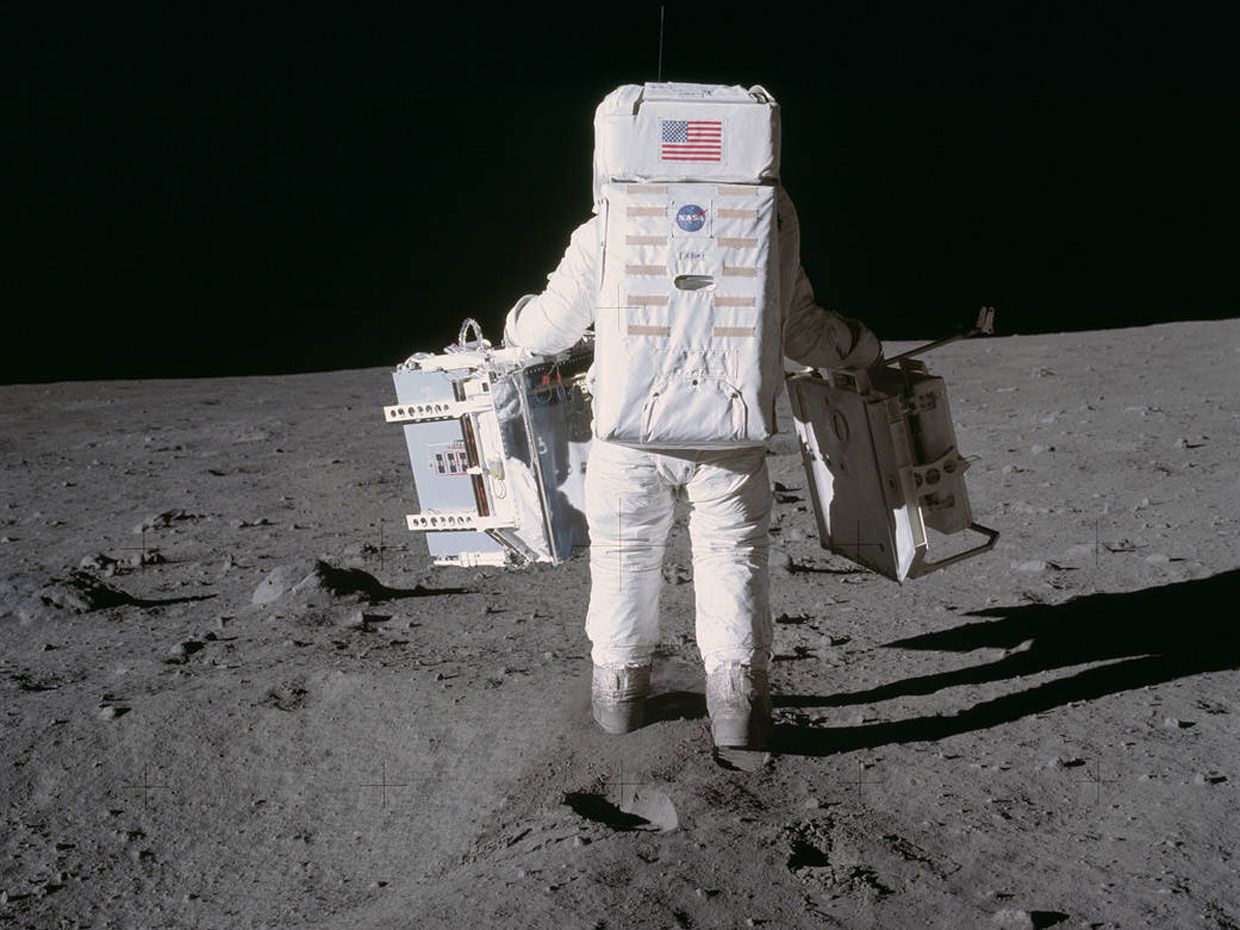A Look Through the History of U.S. Space Travel
Photographs show key moments of the effort to land on the moon
IEEE is marking the 50th anniversary of the moon landing and spaceflight through the Footsteps: IEEE’s Commemoration of Human Space Travel effort. These images were provided by the IEEE History Center, which is funded by donations to the IEEE Foundation’s Realize the Full Potential of IEEE Campaign.
Humans weren’t the first living things to travel into space. Primates and other animals were used for biomedical space research by the United States and other countries. Miss Baker (above), a squirrel monkey, and Miss Able, a rhesus macaque, were launched into space on 28 May 1959 on a Jupiter rocket. They returned safely on the same day.
▲
The first chimpanzee astronaut, Ham, is readied for his flight by his trainers. He was aboard a Mercury Redstone space capsule that was launched on 31 January 1961 from Cape Canaveral, Fla. Ham’s capsule splashed down in the Atlantic Ocean and was recovered by a rescue ship later that day. His only physical injury was a bruised nose. His flight was 16 minutes and 39 seconds long.
▲
The Mercury spacecraft and launch escape tower for the upcoming Mercury Atlas-7 mission undergo preflight checks in Hangar S at Cape Canaveral.
▲
On 9 April 1959, NASA introduced its first astronaut class, known as the Mercury 7. Front row, from left: Walter M. Schirra Jr., Donald K. Slayton, John Glenn, and M. Scott Carpenter. Second row, from left: Alan Shepard, Virgil Grissom, and L. Gordon Cooper Jr.
▲
Astronaut John Glenn inspects artwork to be painted on the outside of the Mercury spacecraft. He nicknamed the capsule Friendship 7.
▲
The Friendship 7 capsule after the flight returned to Earth on 20 February 1962. On board was Glenn, who became the first American to orbit the planet.
▲
William L. Wu, a doctor for Project Mercury, is interviewed by reporters from U.S. broadcasting company CBS about Glenn’s cardiogram, which was taken on the flight and sent from space on 17 February 1962.
▲
This photo, taken on 4 March 1969, shows the stacking of the S-II stage, the structure that accelerated the Saturn 506 rocket through the upper atmosphere. It was housed at the Kennedy Space Center’s vehicle assembly building in Brevard County, Fla., in preparation for the Apollo 11 launch. On 16 July 1969, the mission lifted off.
▲
Astronaut Buzz Aldrin walks to place two components of the early Apollo scientific experiments package on the moon during the Apollo 11 mission. The passive seismic experiments package in his left hand could detect lunar “moonquakes.” The laser ranging retro reflector in his right hand was designed to measure the distance between the moon and Earth.
▲
Joanna Goodrich is the associate editor of The Institute, covering the work and accomplishments of IEEE members and IEEE and technology-related events. She has a master's degree in health communications from Rutgers University, in New Brunswick, N.J.
